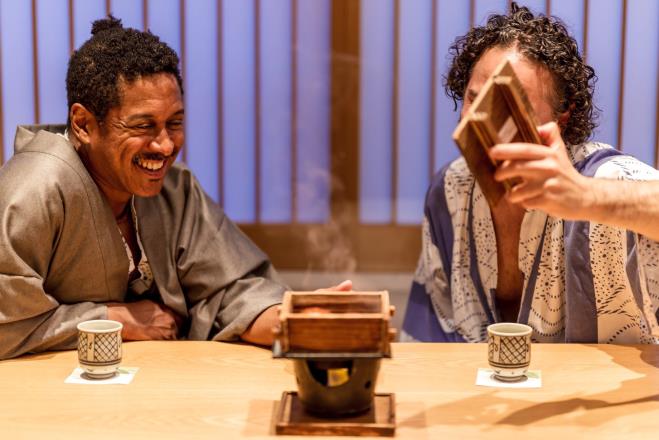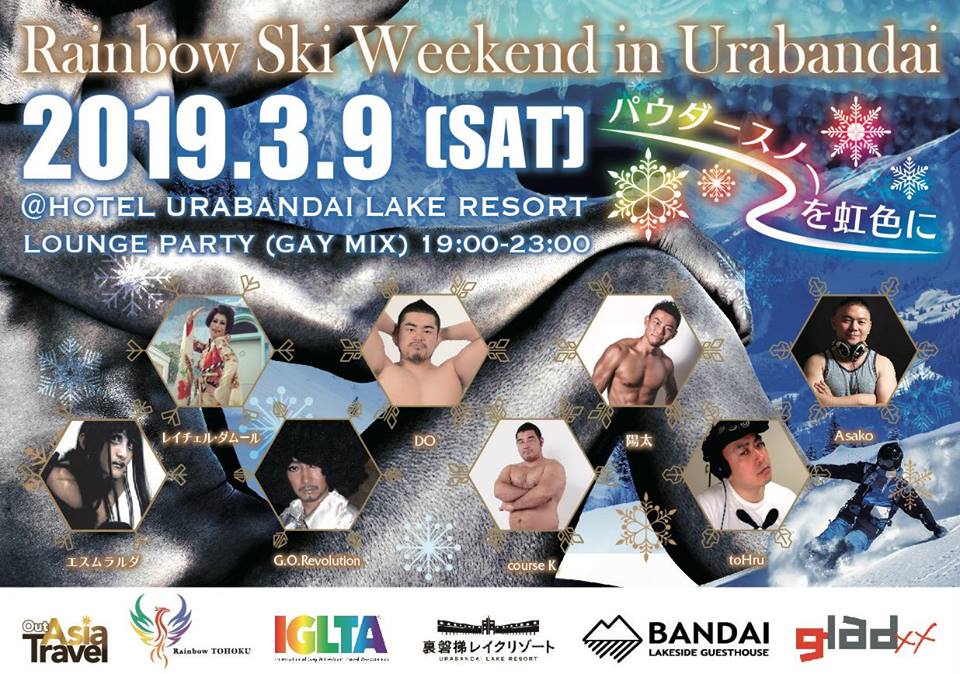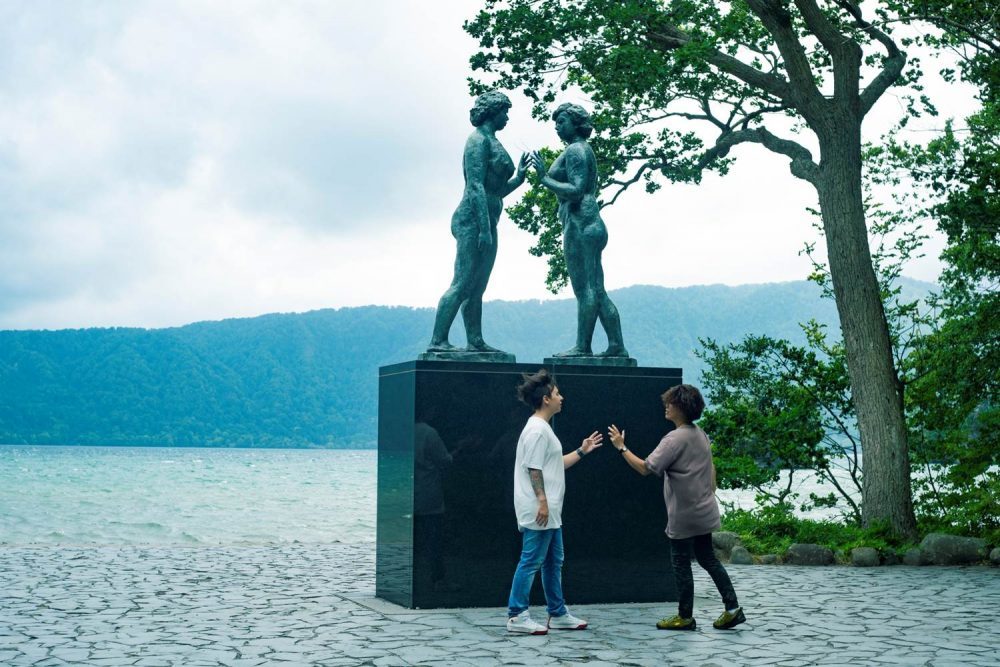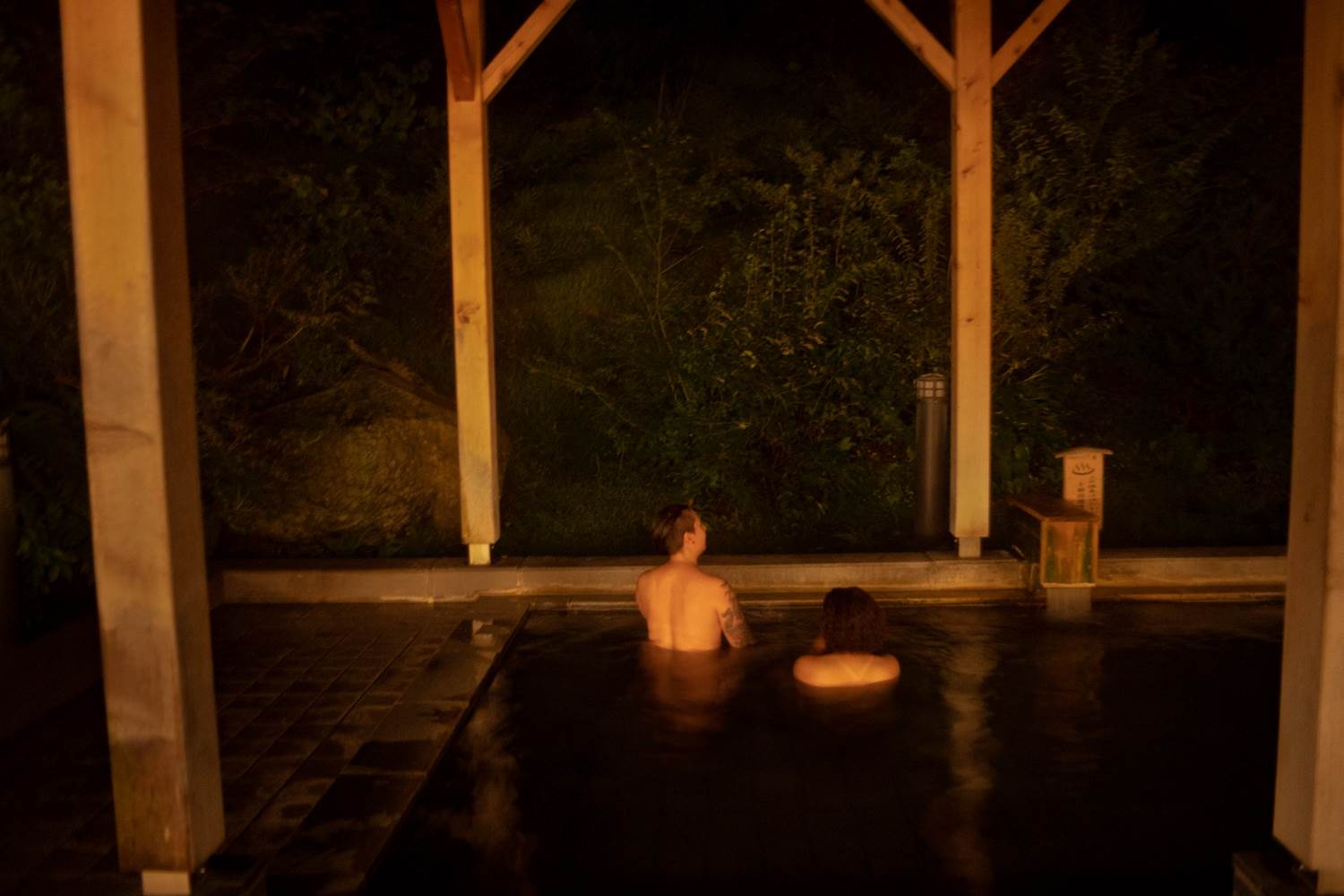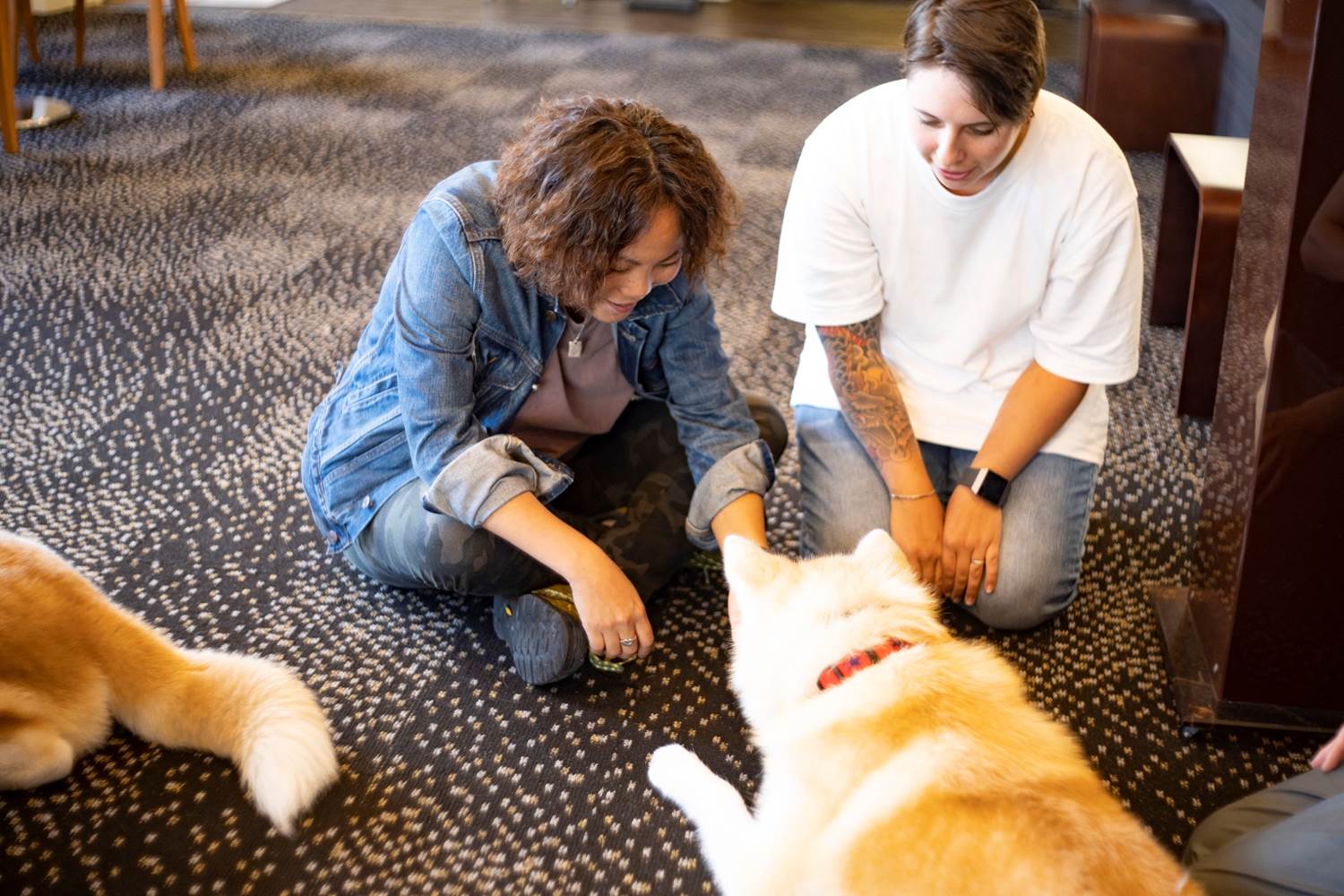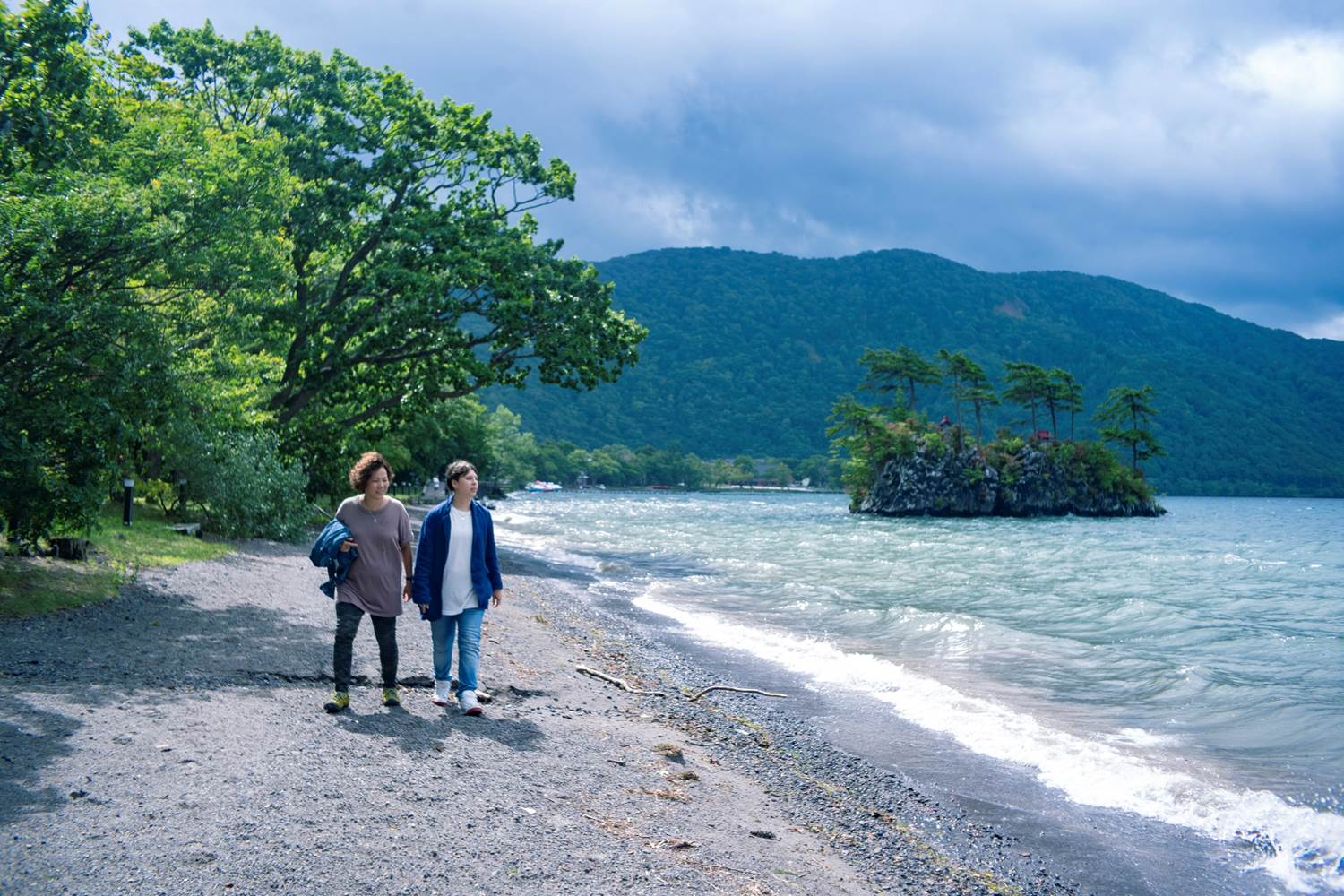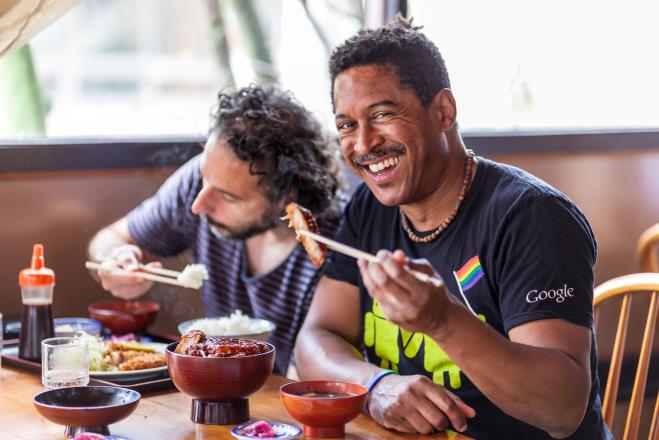
LGBT travelers are some of the pickiest. To be “happy,” all things must come together fabulously, almost perfectly–no, choir-singing-gloriously. For those living in the west, a trip to Asia is a big investment, and in these cases, often the “memory of a lifetime” is the benchmark. My boyfriend and I have lived in Tokyo for a combined 37 years, and have traveled all across the country. When we were presented with the opportunity to go to Aizu, we jumped at it. Aizu has always been on my list, even though Tohoku may not be well known. For many tourists’ first visit to Japan, Aizu doesn’t get the “play time” of more famous destinations such as Kyoto and Osaka to the west. When tourists do venture north, they often skip right over Tohoku to Hokkaido. Fukushima prefecture, despite its many charms, feels like the 4th or 5th sibling in a long line of over-achievers.
We left Tokyo station and took the Yamabiko Shinkansen. Despite being long-time residents of Japan, we don’t know all the names of the trains. But on this trip, we decided a learn-as-you-go approach would take the pressure off having to do all of the research ahead of time. Plus the fabulous tour organizers at Out Japan had everything lined up. Yamabiko means “echo,” and it symbolizes that the first level of shinkansen travel speeds is as fast as the speed of sound. Hikari, meaning light, implies the train travels at the speed of light as a faster express. And the super-express is Nozomi, or hope–because hope travels faster than light. Japan is rife with maudlin poeticisms. Perfect for the drama queen who expects nothing less on an adventure.
A very reasonable 11am departure from Tokyo station whisked us at 300 km/hr for one hour to Koriyama. A local train chugged along 35 minutes to Inawashiro, the eponymous station for the large lake in the region. One must-do in Japan when traveling is eating the local meibutsu “famous cuisine.” In this case, soba or sauce-covered fried cutlets. We opted for the latter, and as a lover of tonkatsu, when it came to our expectations, the juicy, succulent, meaty slices of fried pork hit the spot.
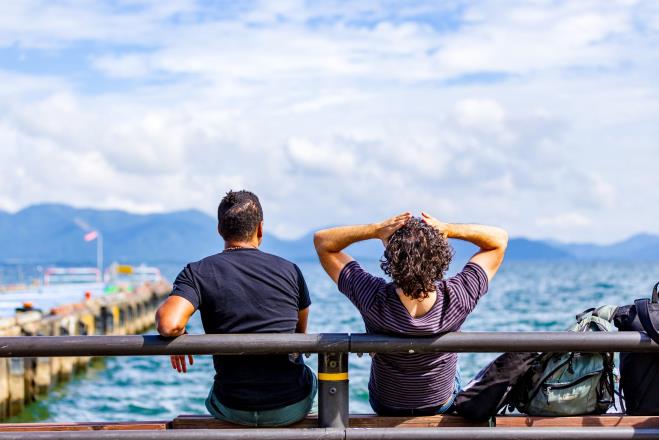
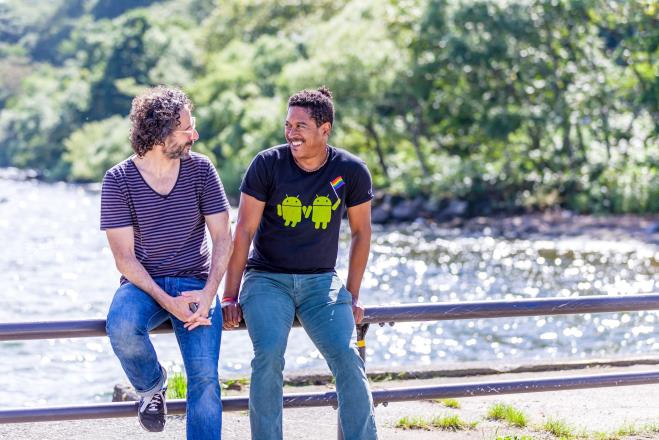
After lunch, we jumped into a taxi and made our way down to Lake Inawashiro. What can I say? Spectacular. We were blessed with fine weather. Whatever clouds that were in the sky were the perfect kind that just served as added scenery to the cerulean water and skies. Japan loves its mascots, and we’re not sure why this queen racked up with her crown on trying to outdo us all, but she did. And she did. From the far-off distance, her very long, slender, white neck and bright golden eyes beak-oned us. The Inawashiro Lake Boat Cruise provides a wonderfully different perspective of the surrounding mountains, the most famous of which is Mt. Bandai. Towering 1,819 meters above sea level in a near-perfect cone, everything came together for our #nofilter postcard-level pictures. Clouds on que wafted across the middle of the mountain creating a backdrop irresistibly Instagrammable. Lake Inawashiro is Japan’s 4th largest lake and traditionally the main water source for peoples in the region. If swan queens aren’t your thing, the summer months offer all sorts of boating, fishing, water skiing, canoeing, kayaking and lakeside runs/walks and picnics. The area is an outdoor activity paradise. #wearehere #mtbandai #lakeinawashiro

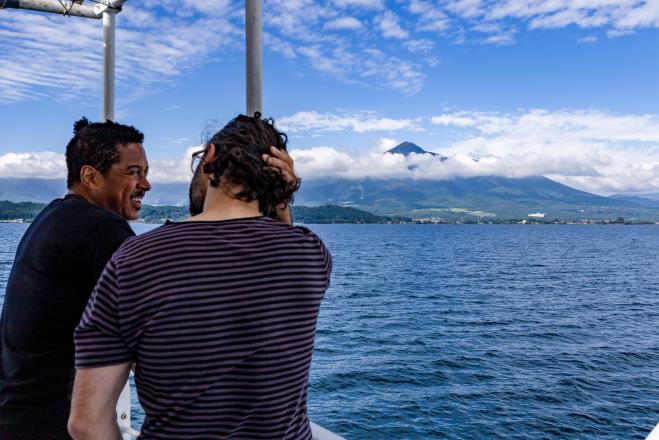
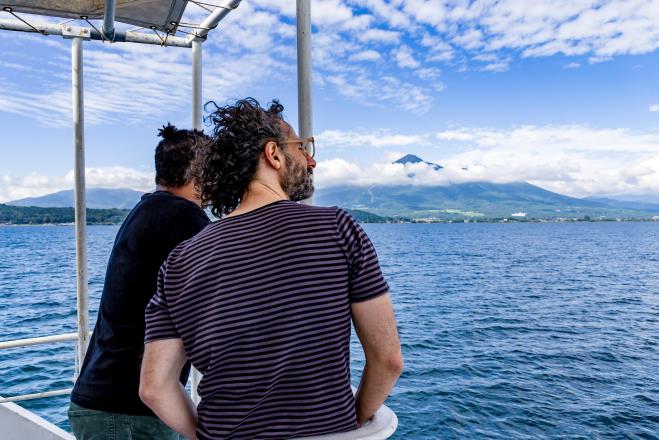
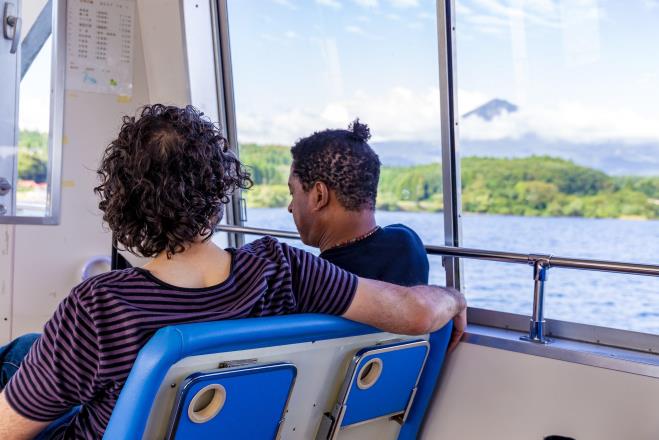
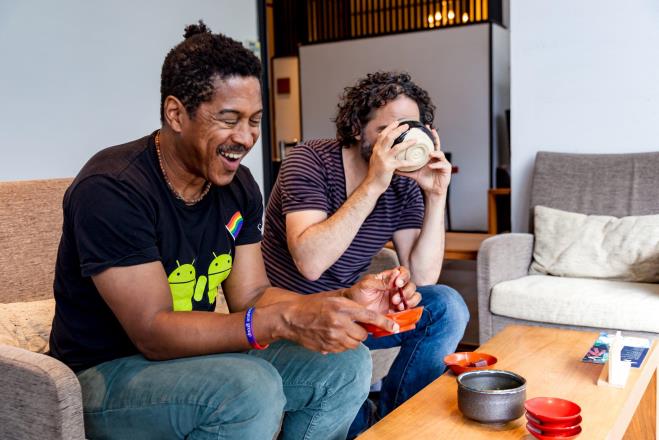
After the 45-minute boat ride (there are several options), we made our way by train and taxi to our hotel, Shosuke no Yado (English, Shosuke Inn Takinoyu), a a wonderfully renovated traditional inn at Higashiyama onsen in Aizu-Wakamatsu city. Overlooking the Yu River and the stunning Fushimi Falls, it is the ideal setting a special getaway. Most ryokan, or Japanese inns, require check in from 2pm. So, if you have an early start, make sure you either drop your bags off first thing at the inn then get out, or pack light so that you can move around easily until 2pm. Service was very attentive. Upon arrival we were given a generous array of Fukushima sakes in a complimentary tasting in chairs with a direct view of forest greenery. After 3-4 very tiny cups of sake, we decided best to head to the room before too much sake checked us out before we even got started. The rooms are a nice mix of modern and simple design with the right amount of Japanese touches to feel authentic–this means a bed to sleep on and tatami to hang out on. This is a good mix for those not used to the “floor.” A small nap then to the baths. Founded in the 8th century, the 1,300 year-old onsen (“hot spring” in Japanese), is amazing. All of the inn’s six baths were beautiful–indoor and outdoor. There are five or six different types. My favorite is the one directly next to the waterfall–pure meditative bliss as the sound of the falls drowns out the world around you.
We made our way up to the rooftop one for a soak. Couples and families can book the space for themselves alone. So, LGBT couples can have the privacy desired to be at ease with the person they love. No hassle, no questions or eyebrows raised. After relaxing in the waters with distant early sunset vistas of the city below, as the inn is perched on top of a hill, we made our way back to our room to get ready for the feast of a dinner. Japanese local foods and vegetables were a delight. One crazy surprise, and we kid you not when we say crazy, is that one local cuisine seems to be “goldfish.” That’s right. So, we had goldfish sashimi. We’re not sure whether we were eating a domesticated Nemo or his distant cousin, but let’s just say we love sushi and it’s an acquired experience. LOL. Other than that “unknown” food element, everything was delicious. Try the plum wine!
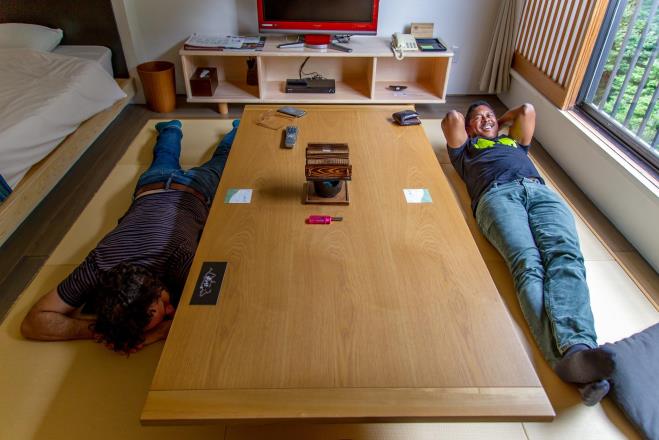
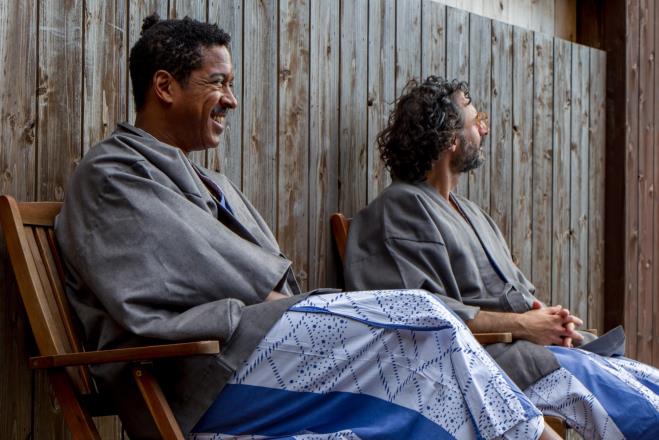
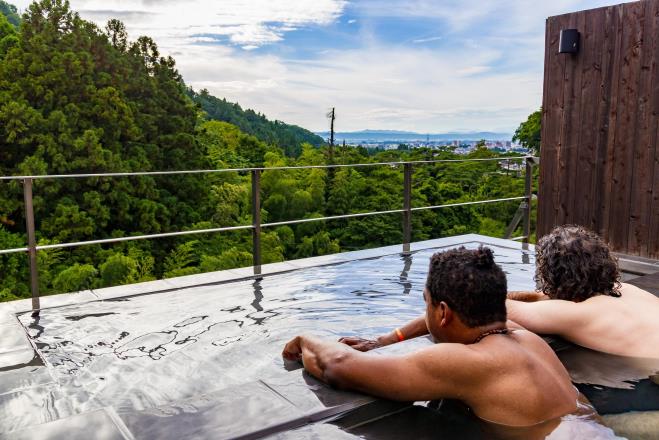
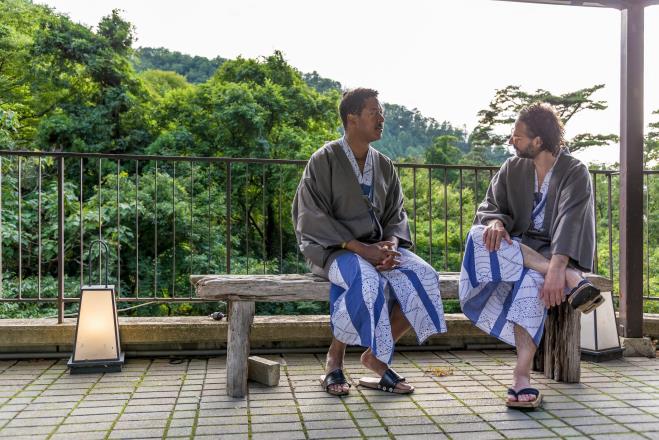
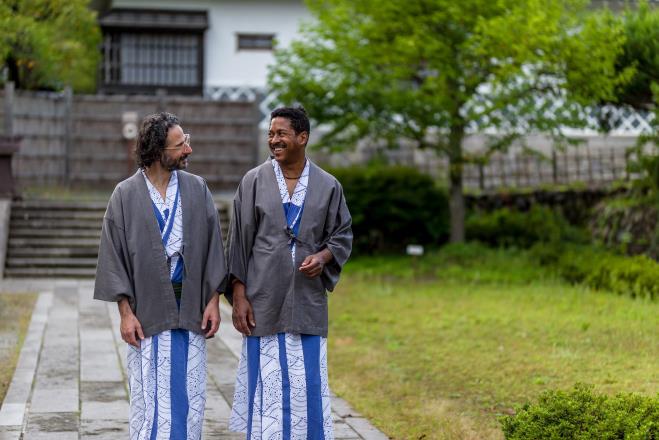
A huge dinner requires another soak. So, we made ourselves available for the 3-4 different baths in the inn. Each has a different medicinal and “relaxation” purpose. Soak it all up. Soak, soak, soak. This is why you go on an onsen trip. Don’t worry; prudence is a distraction. Get naked. Soak. Relax. You will sleep like a log, but you won’t wake up Republican! 🙂
The second day we went down into the city to see the major sites. We hit the Matsudaira clan family home, Tsuruga Castle and its surrounding grounds, an old sake brewery and a hip coffee shop. As mentioned before, Aizu is famous for the drama it caused 150 years ago during the Boshin War, which is the country’s closest conflict to an internal civil war. Google the details, but long story short, the grandson of the Tokugawas was the lord of Aizu, and it was a battle in the country to reinstall the Emperor because of dissatisfaction with the Shogunate in how they dealt with letting foreigners in. The imperial faction won, Edo was renamed Tokyo, and everyone retreated north. The tragedy of Aizu lies in young samurai men, the byakkotai, teenagers 16 and 17 years old, mistakenly thought their town castle was burning and the fight had been lost. They committed ritual suicide but the city had not fallen. In other words, they killed themselves in error. One didn’t manage to, and he survived and moved to Sendai and lived to old age. The 19 young men fighting against the imperial forces were seen as traitors, and their bodies weren’t even allowed to be buried for quite a while. Drama. But eventual clemency allowed the town to put them to rest, and a monument stands to this day on Iimori hill. We saw a reenactment of this drama in the hotel in an authentic puppet show, and this was also very entertaining. The city’s castle has all of this laid out in English with all the players, so this very turbulent time and pivotal turning point in Japanese history can be absorbed in great detail. A fascinating story.
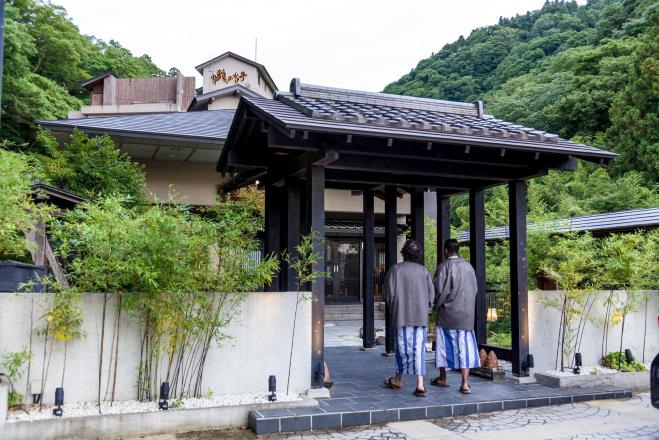
Entrance gate to samurai Tanomo Saigo’s compound, chief senior councillor who served the top daimyo or the region, Matsudaira Katamori, grandson of Tokugawa Harumori of the powerful Tokugawa clan.

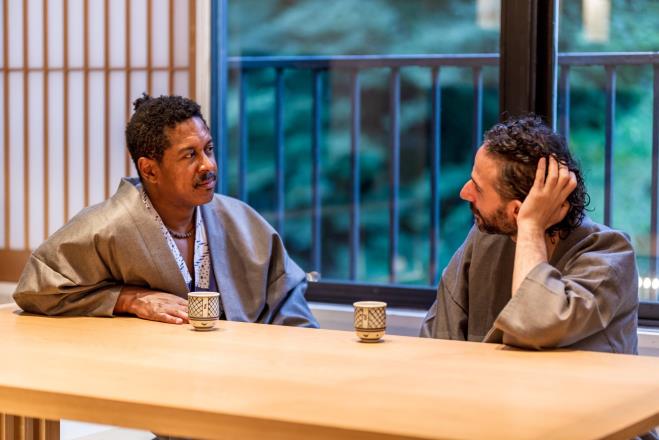
All in all, Aizu is a wonderful place set in glorious nature: beautiful mountains, lakes, marshes and ponds. Activities for all seasons, delicious local food, and a rich historical story that makes the trip worth it for any history buff, outdoor enthusiast and goldfish lover .
